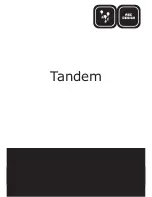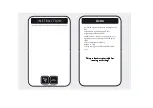
GT-64260A Design Guide
Doc. No. MV-S300165-00, Rev. A
CONFIDENTIAL
Copyright © 2002 Marvell
Page 38
Document Classification: Proprietary Information
May 21, 2002, Preliminary
Figure 14: SDRAM Connection for Registered SDRAM Mode
Both examples use one SCS* pin (one physical SDRAM bank). When using more than one SDRAM device, all of
the pins must be connected in parallel to physical SDRAM banks, except for the SCS* pin. Different physical
banks must be connected to different SCS* pins.
4.2.1 Connecting ECC Memory Bank
The SDRAM ECC memory bank must be connected in parallel to the SDRAM data memory. This means connec-
tion to the same DAdr, BA, RAS, CAS, DWr and CS pins. The ECC bank can be connected to any one of the
SDQM pins. However, it is recommended to use the closest one to the ECC bank for higher signal integrity.
When working with ECC enabled, all transactions on the SDRAM interface are 64-bits wide. This is true for partial
transactions or bursts, since the GT-64260A uses the Read Modify Write mechanism. This means all SDQMs are
asserted on each transaction. On partial reads (smaller than 8B), the SDRAM controller reads all 64-bits of data
and 8-bit ECC (72-bit wide) to check the ECC.
On partial writes, the GT-64260A reads all 64-bits of data and 8-bit ECCs to check the ECC. The GT-64260A then
modifies the data bytes (less than 8B) and the ECC bank writes the updated data back.
On 8 bytes writes and bursts, the SDRAM controller writes all 64-bits of data and the corresponding 8-bit ECC
without using the Read Modify Write mechanism.
SCS*, SRAS*, SCAS*
DWr*, Dadr[12:0], SCS*
Reg1
Reg0
GT-64260A
SDRAM0
SDRAM1
SDRAM2
SDRAM3
SData[15:0], SDQM[1:0]
SData[47:32], SDQM[5:4]
SData[31:16], SDQM[3:2]
SData[63:48],SDQM[7:6]
















































